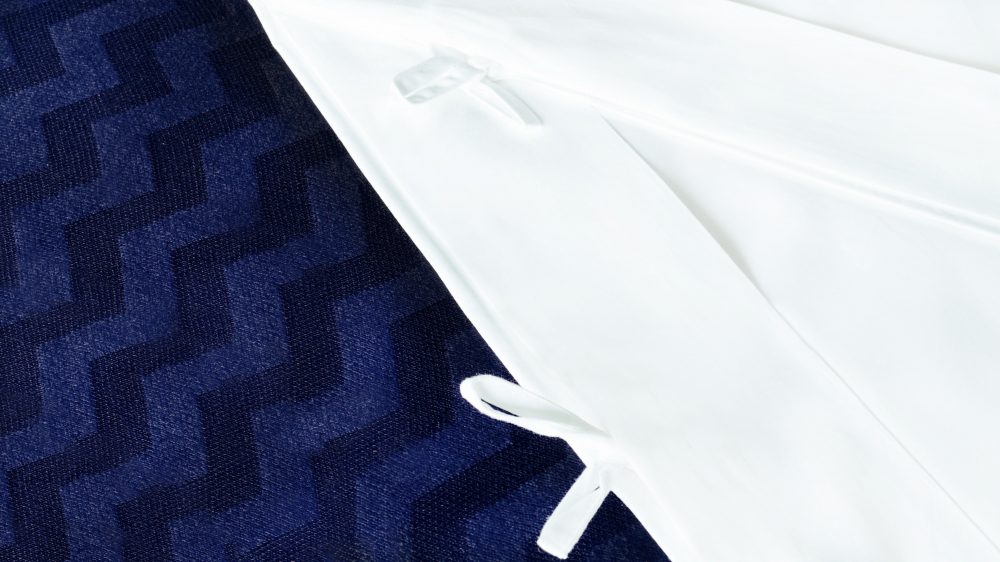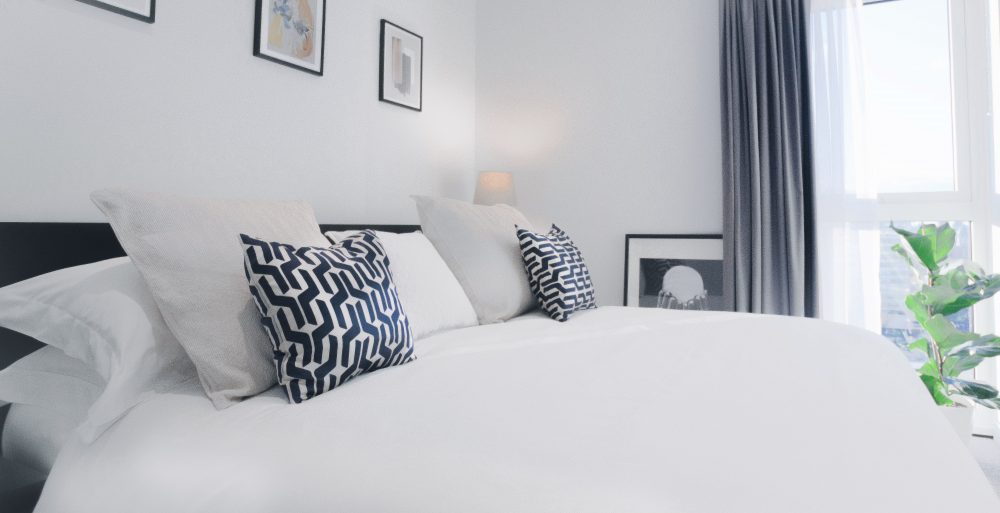Many years ago, they were only limited to European bedrooms, but today, duvets and their covers are used in households all around the globe.
Duvets provide comfort and warmth on cold nights and its covers are a great way to inject some personality in otherwise bland bedroom deco; because of its aesthetical benefits, they come in a come in a variety of colours, designs and fabrics.
So what’s the difference between a duvet, a duvet cover and a comforter?
A duvet is typically solid white and stuffed with feathers, down, or other alternatives. You’ll sometimes find duvets referred to as “down comforters”. They’re generally warm and snuggly although, some are lightweight for use in the summertime.
Why does a duvet require a cover?
A duvet cover is used to protect the duvet from dust and stains.
It’s a fabric that is used to cover and protect a duvet in the same way a pillowcase covers and protects a pillow. Types of Duvet covers are mainly discerned by how they open and close; These are bags, envelopes, poppers and tacks. Depending on your tastes, preference or aversion, you may choose an opening that is suitable for you. Example: People who have a fear of buttons would choose a duvet cover without buttons. Duvet covers closures can be either tied, buttoned, zipped or simply, flapped over – this, is known as the envelope style.

200 Thread Count White Duvet Cover
As for the comforter, comforters are usually coloured or patterned, not solid white, so they don’t require a cover to add style.
A comforter is a thick, quilted, fluffy blanket that is used to keep you warm.
Because comforters are normally used over a top sheet they don’t require an additional layer of fabric to protect from skin oil or sweat. Most comforters are stuffed with a synthetic fill but you can also find ones that are down-filled.
How do you choose a duvet?
Natural fillings, such as ones made of duck or goose feathers provide great insulation and warmth.
They also allow moisture to escape, creating a soft and breathable duvet. It is also important to pay attention to the duvet fill power when buying a feather filling.
Finding out what the duvet fill power is, will tell you a lot about its insulation; Basically, the higher the fill-power, the fluffier and warmer the feathers. These range from 450 to 900 with 700 being very plump.
The alternative is a synthetic filling, this is a more affordable and lightweight option. If you have allergies towards feathers, this is a great choice as they’re usually made from hollow fibre or microfiber. Select a down-filled duvet for the warmest experience. Down-filled duvets are made of the tiniest and fluffiest feathers and provide great insulation.
However, there’s also an alternative feather-filled duvet option which is far more cost-effective.
Feather-filled duvets contain larger feathers than down and are heavier and less expensive.
If you’re allergic to feathers there’s also the silk filled option which is great for filling because it’s hypoallergenic, lightweight and durable. The silk prevents you from becoming too hot or cold when asleep and it even protects your duvets from dust mites.
Another option is the wool-filled duvet which helps with temperature regulation. As a natural filling, the wool is very breathable; It’s an ideal choice if you want a duvet that insulates you while also evaporating moisture.
The last decision you need to make is the choice between a hollow fibre or microfibre filling for a non-allergenic duvet. Hollow fibre has hollow strands that are more wire-like than microfiber but they’re also more durable and trap warmth well. Microfiber is the synthetic version of down and it’s much lighter than feather-filled duvets.
Here are some things you need to know about buying a duvet cover:
Pick the right size, one that is identical to your regular bedding, otherwise, the duvet will not cover it properly.
Here are the duvet cover sizes:
The crib size which is 91 x 114 cm (36 x 45 inches)
The Twin size 168 x 218 cm (66 x 86 inches)
The Double Size 204 x 218 cm (80 x 86 inches)
The Queen Size 229 x 229 cm (90 x 90 inches)
The Kingsize 264 x 229 cm (104 x 90 inches)
And finally the Super Kingsize 284 x 254 cm (112 x 100 inches)
The next thing you need to look out for are the materials; duvet covers are made from the same fabrics like bed sheets, many are cotton. And finally, the care, the easier the care, the more often you’ll be willing to wash your bedding, so look for duvet covers that are safe to wash in a machine and dries easily.
When it comes to fastening; should you choose: poppers, buttons, zips or strings?
Why our first range has string-tie fasteners? From a young age, we’ve been taught to always tie our shoelaces; tying laces are something we have taken with us into adulthood – the smartest of shoes have laces and when we tie them, they stay put for hours to come. when we were young, we were very active but they[laces] rarely came undone, even during high-intensity activities such as running.
Professional athletes rely on this old shoe-fastening technique at the most career-defining moments.
Others argue that buttons break too easily and even poppers warp after a bit with hot washes.
Now that you know all about duvets and fastening it’s up to you to decide.



Leave a Reply